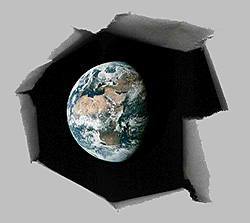

In this work we propose a structure, called a Virtual Web View, on top of the existing Web. Through this virtual view, the Web appears more structured, and common database technology is applied. The construction and maintenance of this structure is scalable and does not necessitate the large bandwidth current search engines technologies require. A declarative query language for information retrieval and networked tool programming is proposed that takes advantage of this structure to discover resources as well as implicit knowledge buried in the World-Wide Web.
Large collections of multimedia objects are being gathered for a myriad of applications. The use of on-line images and video streams is becoming commonplace. The World-Wide Web, for instance, is a colossal aggregate of multimedia artifacts. However, finding pertinent multimedia objects in a large collection is a difficult task. Images and videos often convey even more information than the text documents in which they are contained. Data mining from such a multimedia corpus can lead to interesting discoveries.
We propose the extraction of visual descriptors from images and video
sequences for content-based visual media retrieval, and the construction
of multimedia data cubes which facilitate multiple dimensional analysis
of multimedia data, and the mining of multiple kinds of knowledge,
including summarization, classification, and association, in image and video
databases.